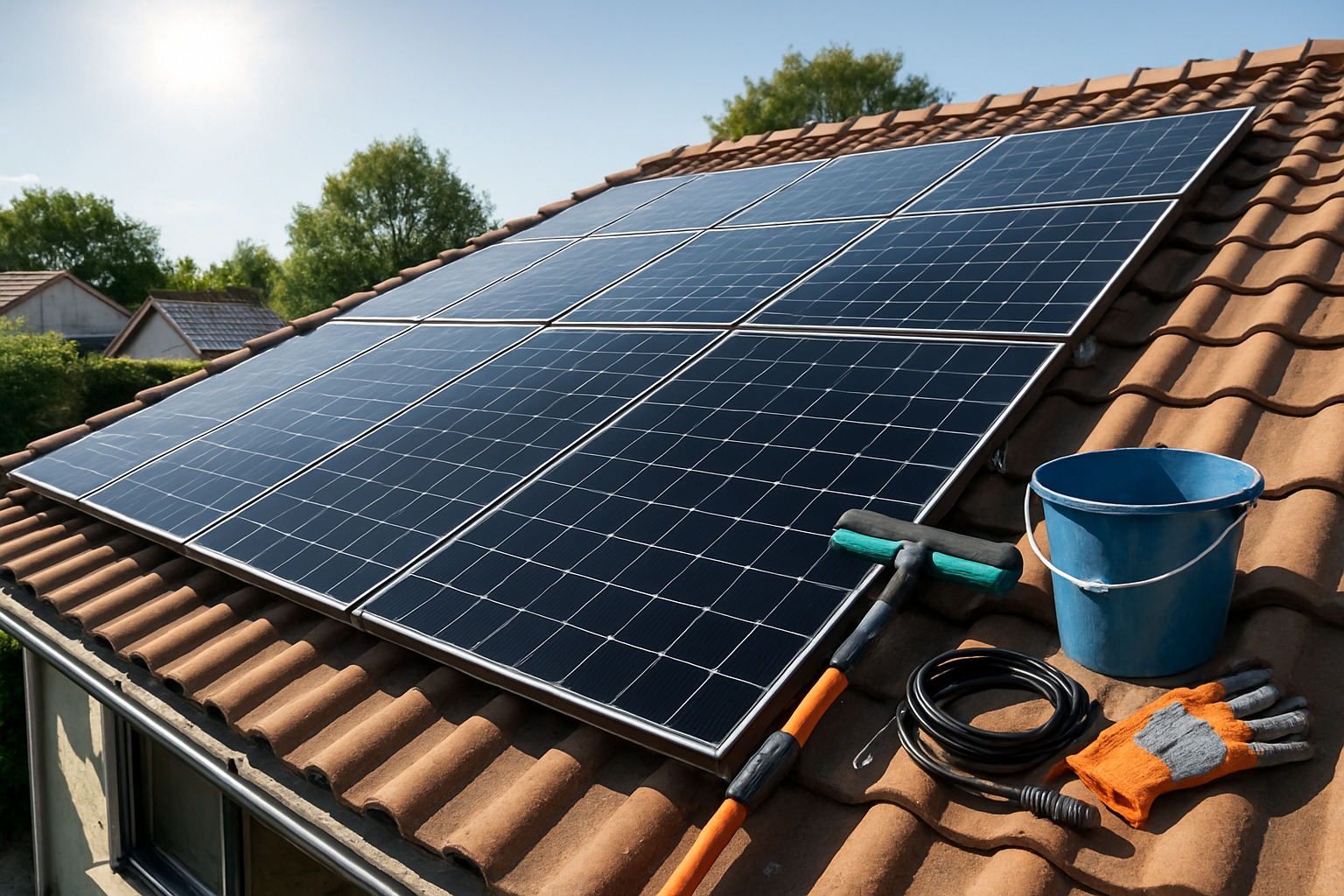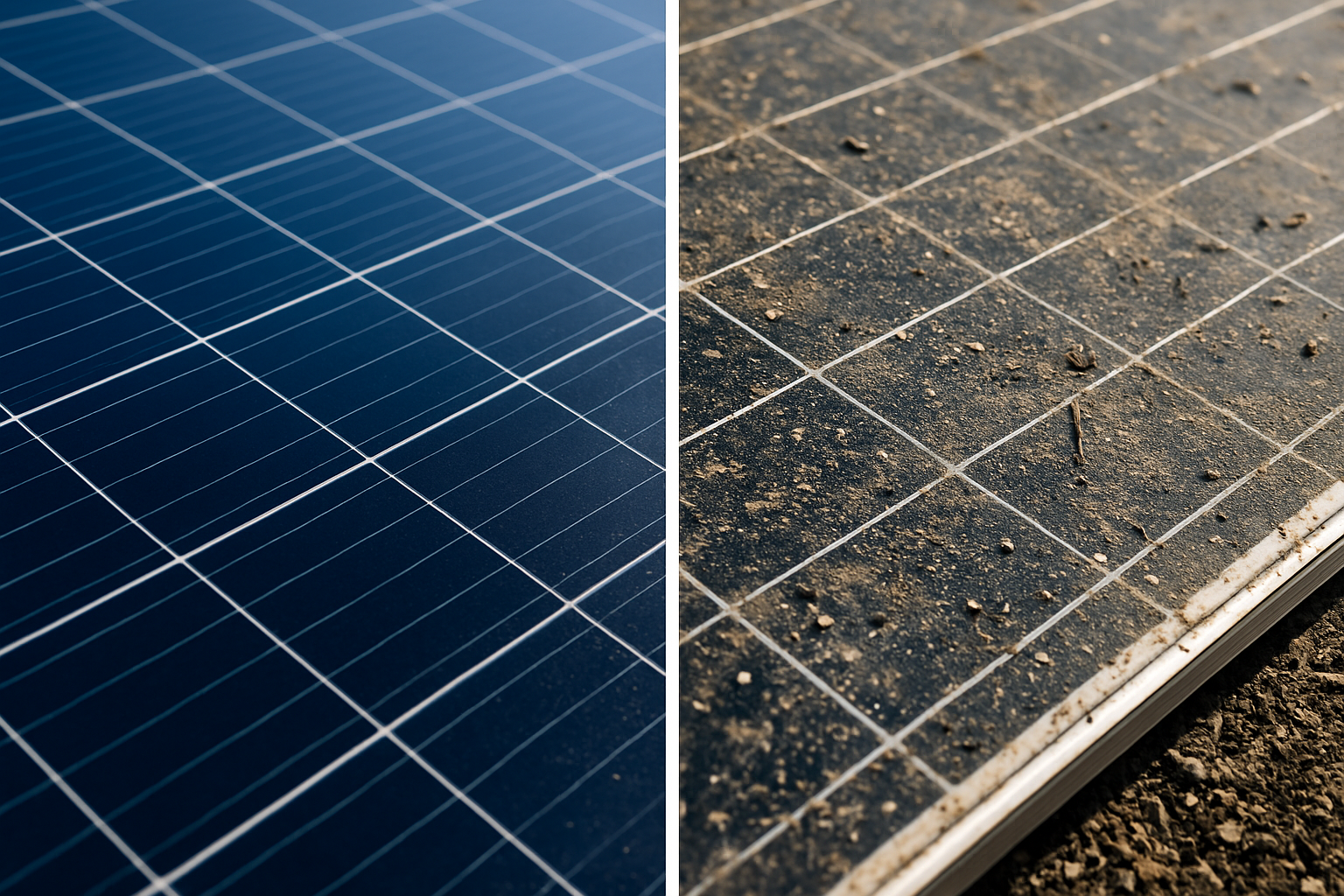Solar panels represent a significant investment in your energy future, and maintaining them properly ensures optimal performance for decades. However, improper cleaning techniques can damage your panels and void valuable warranty coverage. Understanding the right approach protects both your investment and your warranty terms.

Clean solar panels can produce up to 25% more electricity than dirty ones, making proper maintenance essential for maximizing your return on investment. The key lies in following manufacturer-approved methods that preserve warranty protection while achieving optimal cleanliness.
Understanding Solar Panel Warranty Requirements
Most solar panel warranties explicitly outline acceptable maintenance practices. Manufacturers typically void warranties when panels suffer damage from improper cleaning methods, harsh chemicals, or excessive pressure. These restrictions exist because solar panels feature delicate anti-reflective coatings and tempered glass surfaces that require gentle care.
Performance warranties usually guarantee 80-90% output after 25 years, but this assumes proper maintenance. Product warranties cover defects and physical damage, excluding issues caused by user negligence or improper cleaning. Reading your specific warranty terms before cleaning prevents costly mistakes.
Common Warranty-Voiding Mistakes
Several cleaning practices can immediately void your warranty coverage. Using pressure washers creates excessive force that can crack glass or damage seals. Abrasive materials like steel wool or harsh brushes scratch anti-reflective coatings, reducing efficiency permanently.
Chemical cleaners containing ammonia, alcohol, or acids can corrode panel frames and degrade protective coatings. Walking directly on panels concentrates weight in small areas, potentially causing micro-cracks that worsen over time. These damages often aren't immediately visible but can lead to significant performance losses.
Safe Cleaning Methods and Techniques
The safest approach involves using only water, mild soap, and soft materials. Deionized or distilled water prevents mineral deposits that can create spots or residue. A solution of warm water with a few drops of dish soap provides adequate cleaning power without harsh chemicals.
Soft-bristled brushes designed for solar panels effectively remove debris without scratching. Microfiber cloths work well for final polishing, while squeegees help achieve streak-free results. These tools maintain the delicate balance between effective cleaning and gentle treatment.
Step-by-Step Cleaning Process
Begin by turning off your solar system and allowing panels to cool completely. Hot panels can cause rapid water evaporation, leaving mineral deposits and spots. Early morning or late afternoon provides ideal conditions with cooler temperatures and better visibility.
Rinse panels with clean water to remove loose debris and dust. Apply soapy water using a soft brush, working in gentle circular motions from top to bottom. Focus on heavily soiled areas but avoid excessive pressure that could damage the surface.
Rinse thoroughly with clean water, ensuring no soap residue remains. Use a squeegee to remove excess water, working systematically across each panel. Finish with a microfiber cloth to eliminate any remaining streaks or water spots.
Timing and Frequency Guidelines
Cleaning frequency depends on your local environment and weather conditions. Desert areas with frequent dust storms may require monthly cleaning, while regions with regular rainfall might need attention only quarterly. *According to the U.S. Department of Energy, most residential solar installations benefit from cleaning every 6-12 months.*
Monitor your system's performance through your inverter or monitoring app. Sudden drops in energy production often indicate dirty panels, especially if weather conditions haven't changed significantly. This data-driven approach helps you clean only when necessary, reducing unnecessary maintenance costs.
Seasonal Considerations
Spring cleaning removes winter accumulation of debris, pollen, and bird droppings. Summer maintenance focuses on dust and heat-related buildup that can significantly impact performance during peak production months. Fall cleaning prepares panels for winter weather and removes leaves or organic matter.
Winter cleaning requires extra caution due to potential ice formation and slippery conditions. Never attempt to remove ice or snow manually, as thermal shock can crack panels. Allow natural melting and focus on accessible ground-mounted systems when conditions permit.
Professional vs. DIY Cleaning
Professional cleaning services understand warranty requirements and use appropriate equipment and techniques. They carry insurance coverage and have experience working safely at height. For complex installations or steep roofs, professional services often provide better value despite higher upfront costs.
DIY cleaning works well for ground-mounted systems or easily accessible roof installations. You'll need proper safety equipment including non-slip shoes, safety harnesses, and stable ladders. Never attempt DIY cleaning if you're uncomfortable with heights or lack proper safety equipment.
| Cleaning Method | Cost | Warranty Risk | Safety Level | Effectiveness |
|---|---|---|---|---|
| Professional Service | $150-300 | Low | High | Excellent |
| DIY Ground-Mount | $20-50 | Low | High | Good |
| DIY Roof-Mount | $20-50 | Medium | Medium | Good |
| Automated Systems | $500-2000 | Low | High | Excellent |
When to Call Professionals
Certain situations require professional intervention to maintain warranty coverage. Panels with visible damage, loose connections, or unusual wear patterns need expert assessment. Bird nesting, persistent staining, or hard water deposits often require specialized cleaning solutions and techniques.
Commercial installations typically require professional maintenance due to scale, complexity, and insurance requirements. Many commercial warranties specifically mandate professional cleaning to maintain coverage, making DIY attempts counterproductive.
Tools and Equipment Recommendations
Investing in proper cleaning tools ensures consistent results while protecting your warranty. Telescoping poles with soft brush attachments allow safe cleaning from ground level for many installations. Extension handles reduce the need for ladder work and provide better leverage for thorough cleaning.
Water-fed pole systems combine cleaning and rinsing functions, using deionized water for spot-free results. These professional-grade tools justify their cost for larger installations or frequent cleaning schedules. Simpler setups work well for smaller residential systems with occasional cleaning needs.
Essential Cleaning Kit Components
Your basic cleaning kit should include soft-bristled brushes, microfiber cloths, and a high-quality squeegee. A garden hose with adjustable spray settings provides adequate water pressure for rinsing. Mild dish soap serves as an effective and warranty-safe cleaning agent.
Safety equipment remains equally important, including non-slip shoes, work gloves, and eye protection. For roof work, proper fall protection equipment and stable ladders are non-negotiable. Quality tools last longer and provide better results than budget alternatives.
Maintaining Peak Performance Through Proper Care
Regular cleaning represents just one aspect of comprehensive solar panel maintenance. Visual inspections during cleaning help identify potential issues before they become serious problems. Look for cracks, discoloration, or loose mounting hardware that might require professional attention.
Modern energy storage systems and inverters complement clean panels by maximizing energy capture and utilization. Lithium battery storage systems store excess energy produced by clean, efficient panels, providing power during peak demand periods or outages. This integrated approach maximizes your solar investment while maintaining warranty protection across all system components.
Proper maintenance extends beyond cleaning to include monitoring system performance, checking connections, and ensuring adequate ventilation around equipment. Clean panels paired with well-maintained storage systems deliver optimal energy independence and long-term value.
By following manufacturer guidelines and using appropriate techniques, you can maintain your solar panels safely while preserving valuable warranty coverage. Regular, gentle cleaning combined with professional inspections ensures decades of reliable, efficient energy production from your solar investment.





Leave a comment
All comments are moderated before being published.
This site is protected by hCaptcha and the hCaptcha Privacy Policy and Terms of Service apply.